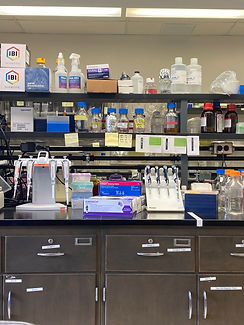University of Hawaii, Manoa
Science Camp
June - July

Initiation
I learned about the science camp when I started high school and have been looking forward to it. I received the opportunity to attend the camp in my junior year. In order to prepare for this camp I started doing research on the possible professors that we can work with in March. The research ranged from their main scope of their research along with the current research that they are doing. For further insight I also discussed with seniors who have attended the camp before about their experience in the laboratories they worked in and what recommendations that they had. After doing basic research on the program I learned of all the possible work that I could do and knew that I wanted to focus on laboratory research when I went to the camp.
Preparation
By May I started to prepare for the upcoming camp in June and by this time I knew that I would be working with Dr. Michael Muszynski. As a result, I sent an introductory email and received resources to further the understanding of the research that I would be doing along with being introduced to the graduate student that I would be working with. During this time I read research paper that was related to the research focus of the laboratory I joined.
Action
While attending the camp I had the opportunity to work in the laboratory and at the greenhouse and was working throughout the week day. When I was in the laboratory I assisted a graduate student on her research about the genetic modification of Dioscorea or yams. During my time in the laboratory I did experiments, experiment preparation, and data collection. The goal of the research that I was doing was to help optimize procedures for tissue culture on crops. Therefore, the experiments were mainly tissue dissections and putting the Dioscorea through various treatments before examining it under the microscope. To prepare for the experiment each time I would collect Dioscorea samples from the greenhouse along with make nutrient media and treatments. During the data collection process I would go to the lab daily to collect information on the growth of the Dioscorea along with identifying any contaminations in the tissue culture. Furthermore, I would go to the greenhouse throughout the week to check on the Dioscorea in order to water it, spray pesticides, along with observing and removing any insects invading the greenhouse.
Reflection
After spending time doing research in the laboratory it has guided me towards wanting to pursue this field in the future. During my time there I had many conversations with the people in the lab about the importance of genetically engineered food and how it can be used to alleviate world hunger. By reflecting on these conversations it has allowed me to bridge a connection between my interest in science and service. This is because it demonstrated to me how science within the laboratory can be applied to the real world in making a difference. Thus, it has inspired me to want to potentially do my own research in the future that can contribute to my service interests in working with the underprivilege community in order to expand their access to food sources.
CAS OUTCOMES
1: Identify own strengths and develop areas for growth
2: Demonstrate that challenges have been undertaken, developing new skills in the process
4: Show commitment to and perseverance in CAS experiences
5: Demonstrate the skills and recognise the benefits of working collaboratively
6: Demonstrate engagement with issues of global significance




